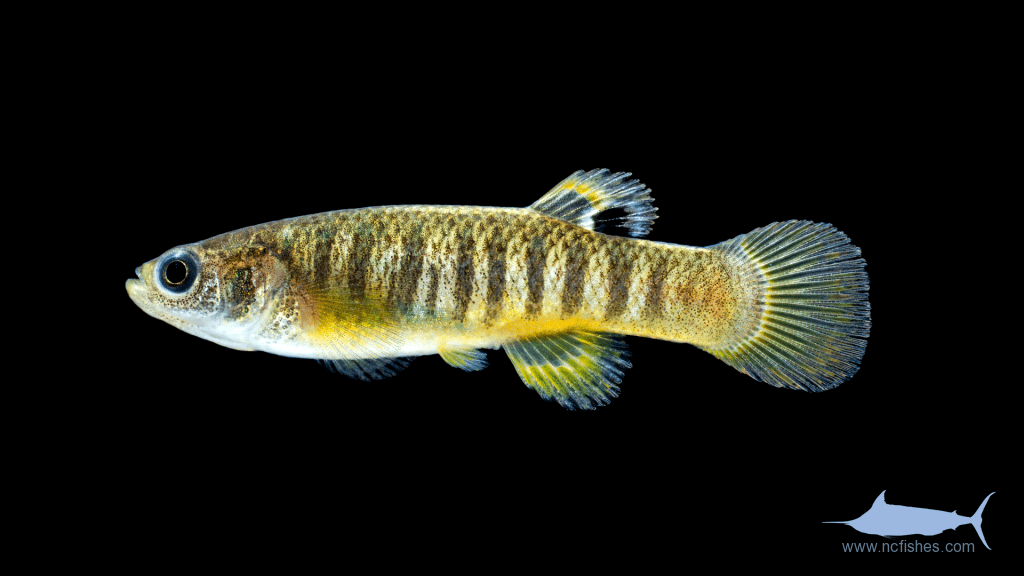Killifish in Trinidad that live with predators in their environment grow more brain cells than their less-stressed peers, a new paper found.

Image credits Scott Smith / ncfishes.
What doesn’t kill you makes you stronger — but it seems they also make you brainier. New research suggests that animals living in predator-heavy environments grow more brain cells than animals that face little to no predation. The findings were made using a group of killifish in a river in Trinidad that is separated into individual populations by waterfalls. These waterfalls block predators from swimming upstream.
Outsmarting the competition
“The killifish living downstream live among predatory fish, while the fish upstream do not,” Josh Corbo, Cancer Research Training Award (CRTA) Fellow at the National Cancer Institute and co-author of the study, told Andrew Concatelli. “Our central question was: how does negative stimuli—predation—in the environment affect the rate of brain cell proliferation?”
“The implication of our research reaches much farther than the Northern Mountain Range of Trinidad. The topic of how the environment we live in affects our health concerns many disciplines, from public health to sociology. Our research draws more attention to our understanding of the relationship we as organisms have with our environment.”
The team writes that while environmental factors are known to influence brain cell proliferation, contributing to brain plasticity and a greater ability to adapt to these factors, there is no research to date on whether environmental factors trump genetic ones in this regard. In other words, on whether the conditions we live in can shape our brain more than our genetics.
To find out, they examined free-living populations of Trinidadian killifish (Rivulus hartii) exposed to very different environmental conditions. Together with Margarita Vergara, now earning a master’s in clinical embryology at the University of Oxford, Corbo sectioned brain tissues used a procedure known as immunohistochemistry to quantify the formation of new brain cells in these animals. The research was carried out while both authors were majoring at Trinity College, Connecticut.
The fish that lived in predatory-heavy areas showed higher rates of brain cell proliferation (roughly twofold higher) and faster brain growth relative to body size than their peers. “Cell proliferation differs among brain regions but is correlated across brain regions,” the authors note, showing that this effect is brain-wide but not necessarily uniform. However, wild-caught fish from predator-heavy areas also had a smaller relative brain size in their early adulthood.
In order to check whether the effect was genetic or environmental in nature, the team also reared a new generation of fish from members in both (predatory-heavy and predatory-free) environments in uniform lab conditions for between 54 and 82 days.
Animals descended from predation-heavy environments also showed a higher rate of brain cell proliferation and faster brain growth compared to those descended from predator-free areas. Furthermore, they found that wild-caught fish had greater cell proliferation in the forebrain than laboratory-reared fish, but very similar everywhere else. This, they explain, suggests that the effect is environmental, not genetic.
“However, both populations showed similar patterns of divergence in the wild and in captivity, indicating that the predator environment per se does not contribute to the enhancement of cell proliferation by the natural habitat,” the team writes.
“The differences in cell proliferation observed across the brain in both the field and [laboratory] studies indicate that the differences are probably genetically based and are mediated by evolutionary shifts in overall brain growth and life-history traits.”
The team says that the observed changes among the two populations could be explained through several different mechanisms. Either individuals are increasing the rate at which they generate new brain cells as a response to predators, or we could be seeing the effects of natural selection at work — in essence, that brainy fish go on to reproduce while the rest get eaten. Alternatively, the presence of predatory fish could improve conditions for the killifish that evade capture, for example by making food more readily available to them through lower competition, which could lead to changes in brain cell proliferation.
The paper “Predation drives the evolution of brain cell proliferation and brain allometry in male Trinidadian killifish, Rivulus hartii” has been published in the journal Royal Society B: Biological Sciences.



